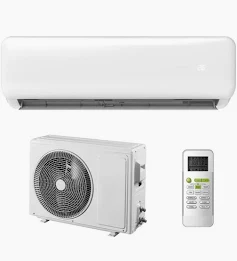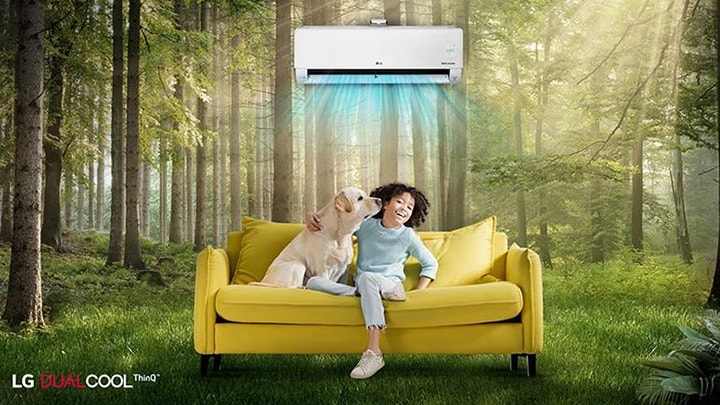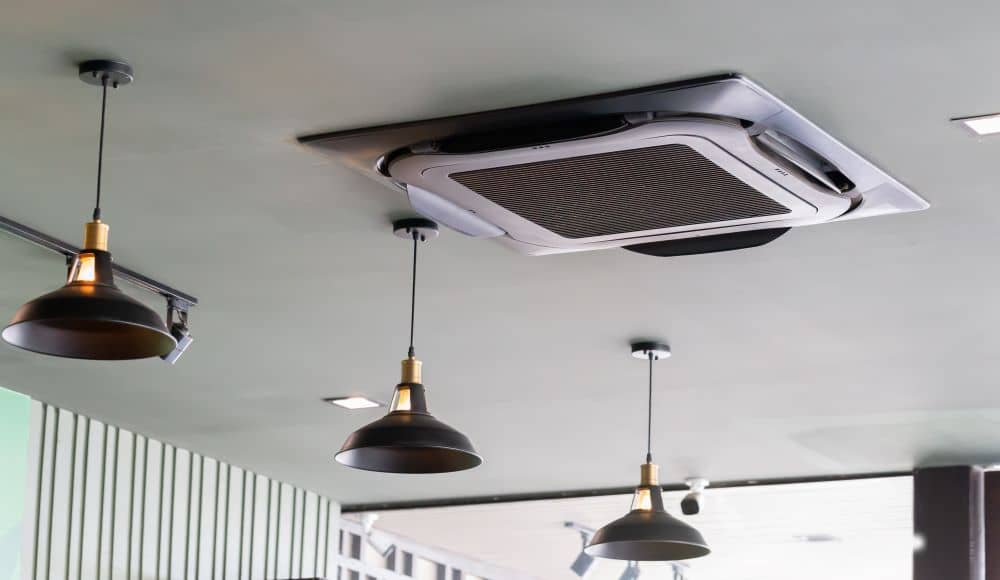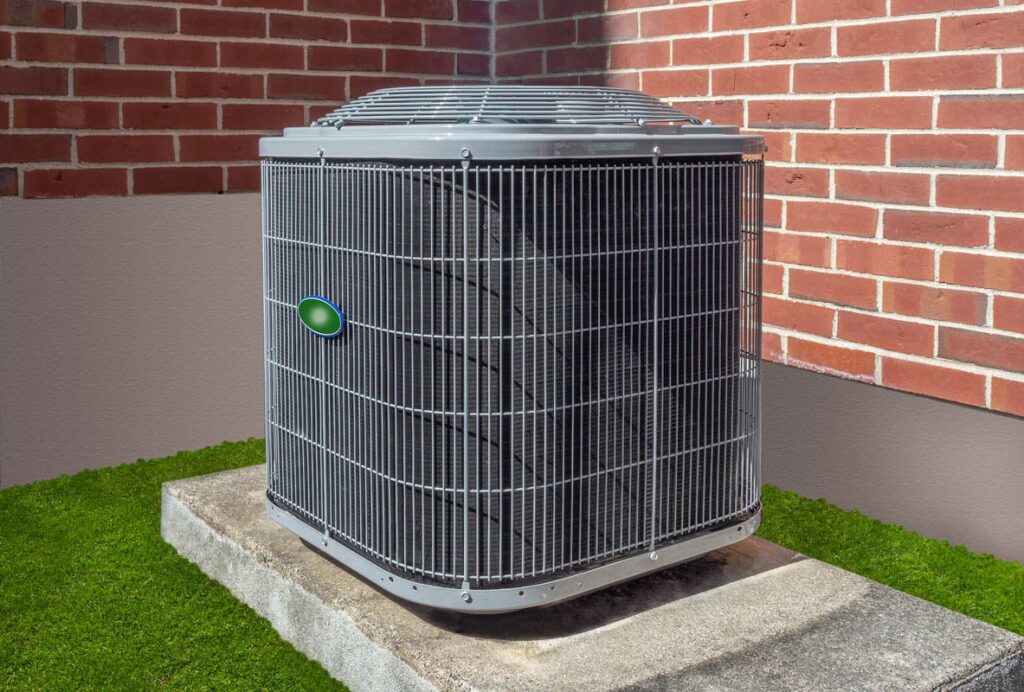Air Conditioning Systems


Commonly Used Types of Air Conditioning Systems
- Split Type Air Conditioner
- Cassete Air Conditoner
- Central Air Conditioning
- Floor Mounted Air Conditioning
- Smart Air Conditoners
- Ductless Mini-Split AC
(i) Split Air Conditioner

Split Air Conditioner – Description, Advantages, and Disadvantages
Description:
A split air conditioner is a widely used cooling system consisting of two main units: an indoor unit that is wall-mounted inside the room and an outdoor unit that houses the compressor and condenser, placed outside the building. The two units are connected by refrigerant pipes and electrical cables. The system cools or heats individual rooms efficiently and is ideal for homes, offices, and small commercial spaces. Modern split ACs often include inverter technology, air purifiers, and smart control features for enhanced performance and energy savings.
Advantages:
Energy Efficient:
Especially with inverter models, split ACs use less electricity by maintaining a stable temperature.
Quiet Operation:
Compressor and fan are located outside, keeping indoor noise to a minimum.
Easy Installation:
Requires no ductwork—just a small hole to connect the two units.
Stylish and Compact Design:
Indoor units are sleek and don’t take up floor space, blending well with room decor.
Improved Air Quality:
Built-in filters remove dust, allergens, and other pollutants for cleaner indoor air.
Independent Room Control:
Ideal for cooling individual rooms as needed, which helps save energy.
Heating Capability:
Many models offer both cooling and heating functions.
Smart Features:
Remote control, timers, sleep modes, and Wi-Fi/mobile app control add convenience.
Disadvantages:
Limited Coverage:
One unit cools only one room—multiple rooms require multiple units, increasing cost.
Outdoor Unit Placement:
Requires adequate outdoor space for the external unit, which can be a challenge in high-rise buildings or crowded areas.
Installation Cost:
Though easier than ducted systems, professional installation is still required and may be costly.
Wall Space Needed:
Indoor unit must be wall-mounted, which can limit placement options or affect interior aesthetics.
Periodic Maintenance:
Filters and coils require regular cleaning to maintain efficiency and air quality.
Summary:
Split air conditioners offer efficient, quiet, and stylish cooling for individual rooms, making them perfect for residential and small office use. While they are energy-saving and easy to control, they are limited in coverage and require separate units for each room, which may increase costs in multi-room applications.
(ii) Cassette Air Conditioner

Cassette Air Conditioner – Description, Advantages, and Disadvantages
Description:
A cassette air conditioner is a ceiling-mounted air conditioning unit designed for efficient and discreet cooling in medium to large spaces. It consists of an indoor unit installed within a false ceiling and an outdoor unit placed outside the building. The indoor unit distributes air in four directions, ensuring even cooling throughout the room. Cassette ACs are commonly used in offices, restaurants, conference rooms, showrooms, and open-plan residential areas where aesthetics and unobstructed wall space are important.
Advantages:
Even Air Distribution:
Delivers 360° airflow, cooling large areas evenly and efficiently.
Space-Saving Design:
Installed in the ceiling, preserving wall and floor space for furniture and decor.
Aesthetic Appeal:
Only the decorative panel is visible, maintaining a clean, modern ceiling look.
Quiet Operation:
The compressor is placed outside, keeping indoor noise levels low.
High Cooling Capacity:
Ideal for commercial or large residential spaces needing powerful cooling.
Smart Control:
Many models support remote or smart controls, including timers and Wi-Fi connectivity.
Flexible Airflow Control:
Adjustable louvers allow customized airflow direction for added comfort.
Disadvantages:
High Installation Cost:
Requires professional installation, including ceiling modifications and false ceiling space.
Not Ideal for Small Rooms:
Overpowered for small spaces and may result in energy waste.
Maintenance Access:
Maintenance can be more challenging due to ceiling installation, needing ladder access.
False Ceiling Requirement:
Needs a suspended or drop ceiling, limiting use in rooms without such construction.
Initial Equipment Cost:
Generally more expensive than wall-mounted split ACs due to design and capacity.
Summary:
Cassette air conditioners are an excellent solution for cooling large spaces with modern aesthetics and uniform airflow. While they offer several benefits like space-saving installation and powerful cooling, they come with higher costs and specific installation requirements.
(iii) Central Air Conditioning System

Central Air Conditioner – Description, Advantages, and Disadvantages
Description:
A central air conditioner is a whole-building cooling system designed to distribute cool air through a network of ducts and vents. It consists of a central unit (usually placed outside or in a mechanical room) that houses the compressor, condenser, and evaporator. Cool air is pushed through ducts and evenly distributed to multiple rooms via ceiling or wall vents. Central AC is ideal for large homes, offices, and commercial buildings where uniform cooling and centralized control are needed. It often integrates with a thermostat and can also include heating (HVAC systems).
Advantages:
Whole-House Cooling:
Efficiently cools all rooms at once through ductwork, providing consistent indoor temperatures.
Aesthetically Pleasing:
No bulky indoor units—just discreet vents in ceilings or walls, preserving interior design.
Increased Property Value:
A central AC system adds long-term value and appeal to a home or commercial property.
Quiet Indoor Environment:
Since the main unit is located outside, there's minimal indoor noise.
Smart Thermostat Integration:
Can be paired with smart thermostats for energy-efficient scheduling and remote control.
Cleaner Air:
With proper filters and maintenance, central AC systems can improve air quality by reducing allergens and pollutants.
Disadvantages:
High Initial Cost:
Installation is expensive due to ductwork and the need for a large central unit.
Complex Installation:
Requires sufficient space for ductwork and a centralized unit—often not feasible in older buildings without renovation.
Energy Consumption:
Less efficient if cooling unoccupied rooms, leading to potential energy waste unless zoning systems are used.
Maintenance Needs:
Requires regular servicing of ducts, vents, and filters to maintain air quality and efficiency.
One-Point Failure Risk:
A malfunction in the central system can disrupt cooling for the entire building.
Limited Zoning Without Upgrades:
Without additional zoning systems, all rooms must be cooled equally—even if some don’t need it.
Summary:
Central air conditioners are ideal for large spaces that require consistent, whole-building cooling. They offer quiet, clean, and aesthetically pleasing temperature control, but come with higher installation costs, complex setup, and potential inefficiencies if not zoned properly.
(iv) Floor Mounted Air Conditioner

Floor-Mounted Air Conditioner – Description, Advantages, and Disadvantages
Description:
A floor-mounted air conditioner is a type of split AC system where the indoor unit is installed at a low height on the wall or directly on the floor, similar to a radiator. It consists of an indoor unit for distributing cool or warm air at ground level and an outdoor unit that houses the compressor and condenser. This design is ideal for rooms with limited wall or ceiling space or for buildings with low ceilings. Floor-mounted ACs are commonly used in residential homes, small offices, and commercial areas requiring targeted cooling.
Advantages:
Easy Installation:
Ideal for spaces without ceiling or high wall access; requires minimal structural work.
Quick & Even Cooling at Low Level:
Delivers cool air from the bottom, which naturally rises and spreads quickly.
User-Friendly Access:
Controls and filters are easy to reach for cleaning or adjustment—no need for ladders.
Compact Design:
Space-saving and ideal for under windows or tight wall sections.
Dual Heating and Cooling:
Many models offer both functions, making them useful year-round.
Quiet Operation:
Similar to other split systems, the noisy compressor is placed outside.
Disadvantages:
Limited Air Distribution:
May not distribute cool air as evenly in larger rooms compared to ceiling-mounted units.
Occupies Floor or Wall Space:
Takes up low-level wall or floor area, which could interfere with furniture placement.
Not Ideal for Large Open Spaces:
More effective in smaller, enclosed areas; may require multiple units for big rooms.
Vulnerable to Obstruction:
Airflow can be blocked by furniture, curtains, or other items placed nearby.
Higher Energy Use (in some models):
May be less efficient in large areas compared to central or cassette systems.
Summary:
Floor-mounted air conditioners are a practical solution for rooms lacking ceiling or high-wall access. They offer easy installation, quick low-level cooling, and convenient maintenance. However, they’re best suited for small to medium-sized rooms, and furniture placement must be carefully planned to avoid blocking airflow.